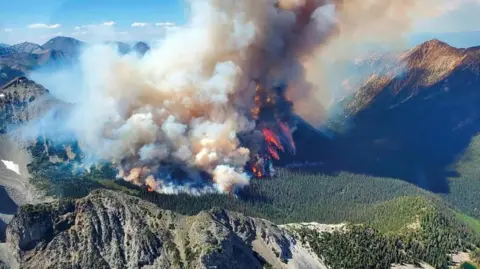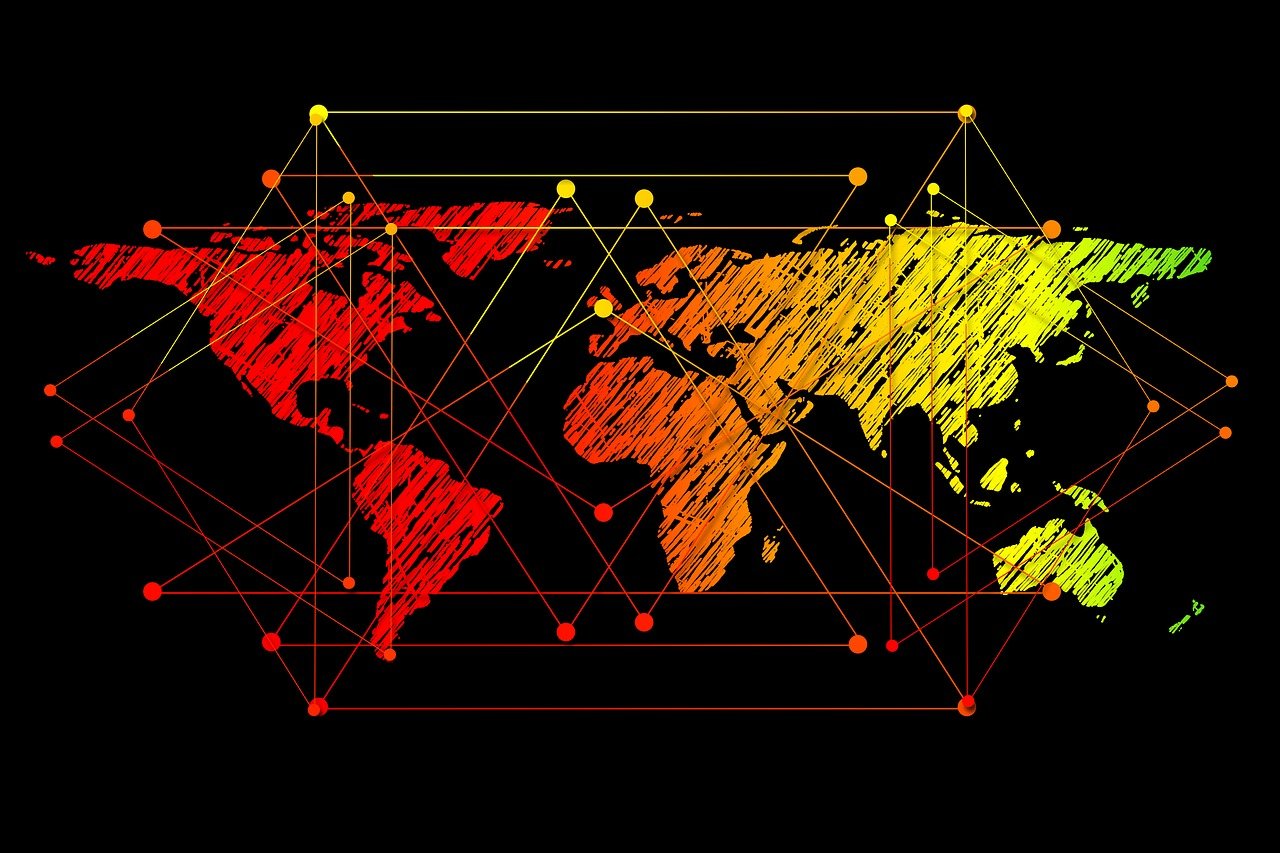 BC Wildfire Service/Reuters
BC Wildfire Service/ReutersCanada’s record wildfires last year produced more carbon emissions than the burning of fossil fuels in all but three major countries, according to a study released in the journal Nature.
Only China, the US and India produced more carbon emissions than the 2023 Canadian fires.
Unusually high temperatures and drought helped fuel the worst wildfire season in the country’s history, burning 15m hectares (37m acres) of land – an area roughly the size of Florida.
Scientists worry the exceptional burning of Canada’s boreal forest could affect global climate change projections, as the forests play a major role in capturing planet-warming carbon.
The study, published on Wednesday, was authored by a team of researchers from the California Institute of Technology and others from universities in Canada, the Netherlands, and the US state Missouri.
The researchers calculated the total emissions from the fire at around 647 teragrams of carbon. A teragram is a million metric tons.
This figure far exceeds Canada’s typical forest fire emissions, which have hovered between around 29 teragrams to 82 teragrams of carbon over the last decade.
It is also five times more than Canada’s total annual emissions, and comparable to India, which emitted 740 teragrams of carbon last year.
Brendan Byrne, a carbon cycle scientist with Nasa’s Jet Propulsion Laboratory and one of the authors of the study, said these figures are “shocking”.
He said there is growing concern that wildfires of this magnitude could become more frequent in Canada, which would have an impact on the world’s overall carbon footprint.
The growing intensity of Canada’s wildfires
Wildfires during the summer months in the country’s boreal forests – northern forests made up of deciduous trees and conifers – are normal and common, but scientists say they have grown in intensity and frequency in recent years.
In 2023, Canada experienced its hottest and driest summer on record since 1980. These conditions helped cause the worst wildfire season in the country’s history, with blazes burning coast-to-coast.
While most fires were out by autumn, a record number continued to burn under thick layers of snow over the winter.
This year’s wildfire season has been tamer than last, though it is on track to produce the second-highest carbon emissions of a Canadian wildfire season since 2003, according to August data by the European Union’s space programme.
These projected emissions for the 2024 season are second only to last year’s devastating fires.
Mr Byrne said it is difficult to predict what wildfire activity will look like in the future but his study warns that the same hot and dry conditions that led to Canada’s record wild season could become the norm by the 2050s.
Other studies have projected that wildfires in Canada could become more frequent and intense in the future due to rising temperatures.
How Canada’s wildfires can impact future climate projections
In the study, researchers raise the alarm on the long-term consequences of increased wildfire activity in the country.
Canada’s forests play an important role in capturing planet-warming carbon from the atmosphere, as they amount to 8.5% of the Earth’s total forested area. Their trees absorb fossil carbon dioxide from the atmosphere, slowing the pace of global warming.
In recent years, studies have shown that the country’s boreal forests are burning faster than they can regrow.
“This could have the long-term effect of reducing the ability of the forests to store carbon, and therefore there’d be more carbon dioxide in the atmosphere than we would expect,” said Mr Byrne, the co-author of the study.
This means that scientists may have to rethink just how much carbon humans can emit into the atmosphere without warming the planet beyond what the world can adapt to.
“When we plan for the future, we basically expect that these forests will continue to take up carbon,” Mr Byrne told the BBC.
The 2015 Paris Agreement has set a global warming limit of 1.5 C (2.7 F) above industrial times. Last year was the warmest year on record since 1850, according to the European Union’s Copernicus Climate Change Service.
Canada is already feeling the impact of climate change. The country is warming at a rate twice as that of the global average due to its large land mass, and its Arctic region is warming three times as fast.
Last summer, temperatures in Canada were more than 2.2 C (4 F) above the historical average.

